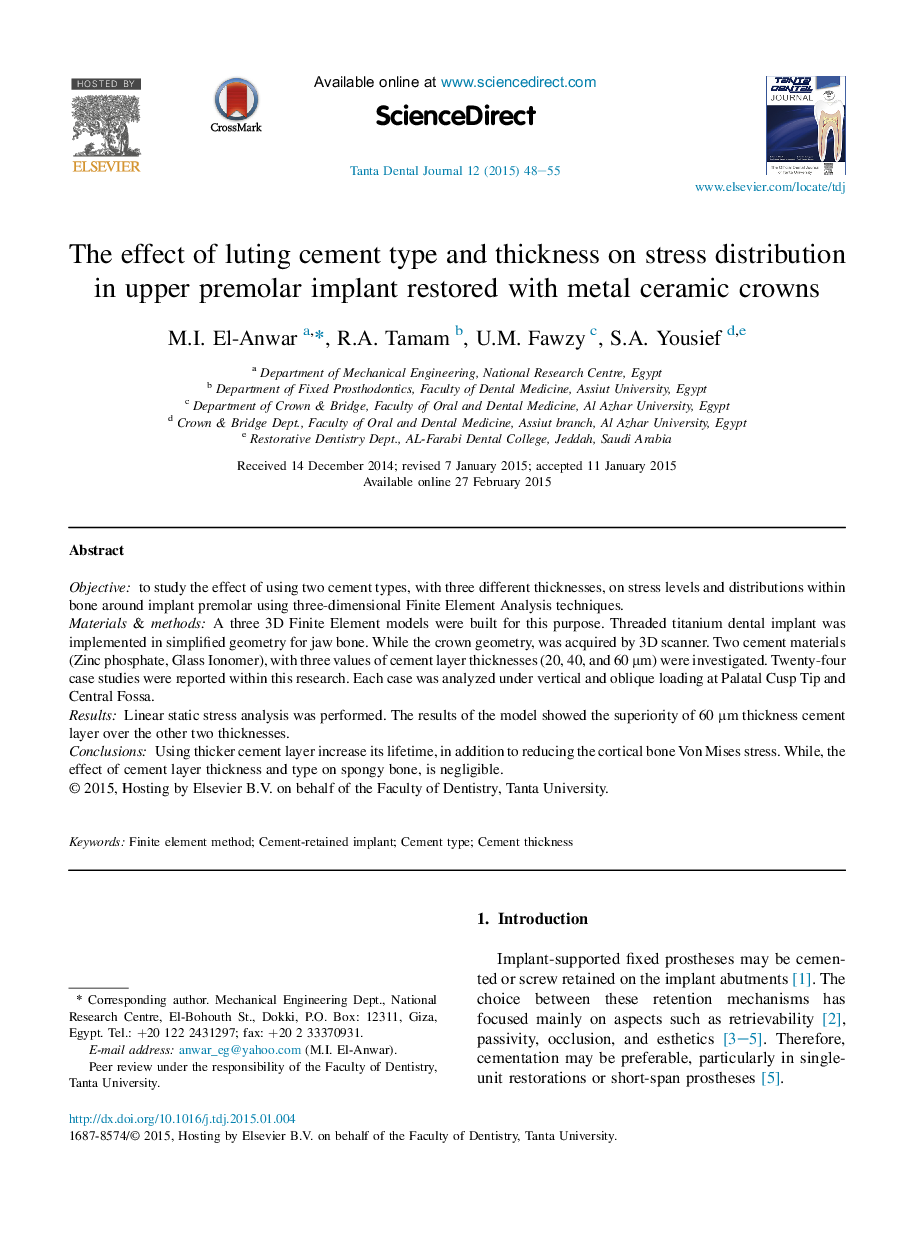| Article ID | Journal | Published Year | Pages | File Type |
|---|---|---|---|---|
| 3179616 | Tanta Dental Journal | 2015 | 8 Pages |
Objectiveto study the effect of using two cement types, with three different thicknesses, on stress levels and distributions within bone around implant premolar using three-dimensional Finite Element Analysis techniques.Materials & methodsA three 3D Finite Element models were built for this purpose. Threaded titanium dental implant was implemented in simplified geometry for jaw bone. While the crown geometry, was acquired by 3D scanner. Two cement materials (Zinc phosphate, Glass Ionomer), with three values of cement layer thicknesses (20, 40, and 60 μm) were investigated. Twenty-four case studies were reported within this research. Each case was analyzed under vertical and oblique loading at Palatal Cusp Tip and Central Fossa.ResultsLinear static stress analysis was performed. The results of the model showed the superiority of 60 μm thickness cement layer over the other two thicknesses.ConclusionsUsing thicker cement layer increase its lifetime, in addition to reducing the cortical bone Von Mises stress. While, the effect of cement layer thickness and type on spongy bone, is negligible.
